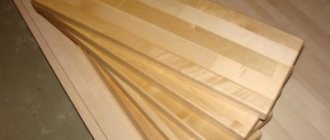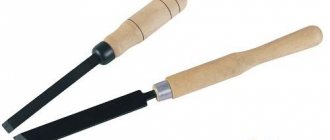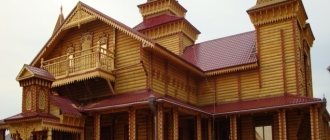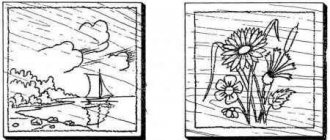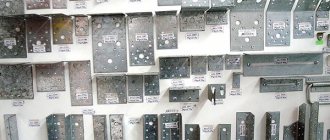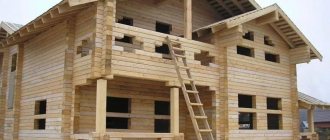- Business: Agribusiness; investments from 20,000 rubles;
- Business area: production
Woodworking business
The timber and woodworking business is one of the most profitable, both in terms of the turnover of invested funds and in terms of increased profitability with the consolidation of production.
Timber is a renewable raw material, the demand for wood products is steadily growing and the market is constantly expanding, and there seem to be enough forest resources in Russia...
Anticipating your objections, dear gentlemen, entrepreneurs, I agree with them:
- Yes, we haven’t regenerated the forest for 25 years, but we can’t get to quality round timber - there are no roads, and it’s expensive to transport from abroad - prices are rising by leaps and bounds;
- Yes, it is very difficult to enter an already established timber market; greater administrative and financial capabilities are needed;
- Yes, the needs of this very market are steadily growing, but the competition is also very tough.
And yet there are open doors and a gigantic free niche in the timber trade and woodworking. The Finns were the first to enter it, followed by the Germans, Dutch, and French, promoting the production of thermally modified wood (TMW).
The essence of the technology: removal of some moisture-loving chemicals from wood by thermal decomposition and - we obtain hydrophobic wood with new color properties.
The largest companies with huge turnovers appeared, such as Platho (Holland), Mohlbeck (Austria), Finnforest and Stora Enso Timber (Finland), Thermoholz (Germany). The capacity of the Russian market alone is estimated by experts at 100-125 thousand cubic meters per year.
The disadvantages of TMD also appeared: the color range quickly fades in sunlight, to obtain high-quality products, high-quality source species are also needed (beech, ash, oak, tropical wood), production is energy-intensive, and hence the prices are considerable.
And is it necessary to decompose the natural chemical components already present in wood in order to ensure hydrophobicity? After all, the density and strength decreases, fire and bioresistance remain the same, that is, TMD burns in the same way as the original wood, and rots and molds.
It was then that the European Union lifted the ban on chemical modification of wood and began its research and production in earnest.
So far, only the production of chemically modified wood (CMW) has been announced: “Accoya” in Holland by acetylation and “Kebony” in Norway by furfilling the original wood. Unique bridges and multi-story buildings have already been built there (photo on the Internet), since the specific strength of wood exceeds many grades of steel.
Europeans, Americans and Japanese realized that they could eliminate the shortcomings, as well as impart new useful properties to such an old and seemingly familiar material as wood, simply by introducing certain modifier substances into the solid wood, which, under favorable conditions, react with the natural components of wood , make it possible to obtain a new biocomposite with predetermined performance properties. The Japanese are even planning to use modified wood in space.
By the way, it’s interesting: did you understand it yourself or did they spy on us? After all, wood modification was actively developed, GOSTed and used in the Soviet Union: “Destam” for the production of bearings, “Lignamon” for parquet and furniture (still produced in Slovakia).
Well, yes, as they say - “new is old, only forgotten by everyone.” After all, in the vastness of the Union there was production of its own TMD (Minsk), acetylated modified wood (Perm), furfulized wood (Barnaul), and most importantly, all these developments led to the creation of a new technology, which, having absorbed all the experience, can finally really create new modified wood from any original wood whose properties are specified during its production, according to customer requirements.
This is a mechanochemical modification of wood, in which an inexpensive main modifier-synergist, introduced into the intercellular level of the wood substance, carries, while repeatedly enhancing its properties, a small amount of specific functional additives, which give the new material the desired properties.
The chemical reaction between the modifier and natural wood components occurs in solid wood under the influence of pressure, temperature and mechanical forces. The preliminary name of the new biocomposite is mechanochemically modified wood (MCW).
It is MHMD that is the very door that allows you to find so far (the Germans have already given it the name HSG or Holz Super Gut - superwood) that unoccupied space in the woodworking products market. I'll explain how.
Raw materials
In the production of MHMD, any wood raw material can be used: solid wood of any species, burnt wood, driftwood, thin wood, wood waste, even straw. When using solid wood (logs, beams, boards) as the initial wood, it is more economically profitable to use fast-growing “non-commercial” wood species: aspen, poplar, willow, alder, sedge, birch, etc.
That is, everything that modern timber harvesters in your area do not yet need, because it is not in demand, and they will give it to you cheaply. If you believe the experts, there are more than 16 million cubic meters of such goodness in the European part of Russia alone!
The reserves of driftwood in the European part of Russia (according to the Central Research Institute of Lesosplav) only on active timber rivers exceed 9.0 million cubic meters! The cost of one raised cube of driftwood starts from 500 rubles. These are the resources!
It is also necessary to take into account that cleaning rivers is a matter of great importance for Russia - here even the native administration can finance it, and the people will say thank you. And the entrepreneur has not only first-class timber assortment, but also a stained one, which, using MHMD technology, can be turned into pure gold abroad, where it is especially in demand.
Of course, a specialist in matters of driftwood will object to me that 50% of the entire raised driftwood will be of excellent assortment, and the rest will be spoiled and rotten wood, roots, snags... For the MHMD technology, this is also the raw material.
It is necessary to process it into sawdust and make chipboard, again using MCMD technology, without the use of expensive resins. According to my calculations, the cost per square meter of such chipboard in a woodworking industry that processes only 160 tons of its waste is about 100 rubles.
Auxiliary raw materials – an aqueous solution of the modifier. The current water consumption for the technical process is insignificant for a small manufacturer (200-300 cubic meters of MHMD per month) and can not be taken into account when calculating the cost. It is more important at what price to purchase the main modifier.
In my case, it is urea (preferably grade A, also food grade) and prices for it range from 11 thousand rubles per ton at Salavatnefteorgsintez LLC and up to 38 rubles per kilogram at a nearby store. So - how much it will cost you in the cost of MHMD (and sometimes you need up to 200 kg per cubic meter) - the work of your supplier. The share of functional additives to the main modifier is insignificant. Although they are expensive, they require several kilograms per ton of solution.
WOOD PROCESSING is one of the country's fast-growing and promising industries, since our country accounts for about a fifth of all forests on the globe. And an equally significant factor is that wood is a raw material whose reserves can be continuously restored, unlike non-renewable ones (gas, coal, ore, oil, peat, etc.). The conclusion follows from this - in order for woodworking in Russia to develop dynamically, there is no need to stand still, it is necessary to introduce new woodworking technologies , put into operation new equipment, and improve the qualifications of personnel.
The long-term plan for the development of the country's wood processing industry provides for increasing production volumes, increasing labor productivity, and more fully using forest resources.
One of the ways to increase the efficiency of sawmilling is the concentration and specialization of sawmill production, the commissioning of new wood processing technologies . The technical level of sawmill production will be increased through the creation and implementation of new equipment and the introduction of optimal methods for cutting lumber. The following activities are planned in this direction:
- mechanization of unloading and sorting of raw materials before sawing by diameter and quality;
- replacement of sawmill frames and edgers of outdated models with new ones;
- introduction of a line for aggregate processing of logs with a diameter of up to 24 cm;
- the use of package-forming lines, high-performance drying chambers, lines for rejecting and sorting lumber;
- further development of the batch method of transporting materials;
- processing of waste into technological raw materials and short-length lumber into laminated laminated wood and biofuel (pellets), which has been rapidly developing in recent times.
In the plywood industry, the main efforts are aimed at increasing labor productivity, expanding the range and improving the quality of products. To achieve this, heat treatment of raw materials in open pools should be more widely used; plywood gluing technology with preliminary cold pressing of packages; increasing the number of floors of hot presses from 15 to 25; debarking and cutting lines for raw materials; plywood assembly and gluing lines; roller gas drying chambers with nozzle blast; mechanization of warehouse work.
Further development of chipboard production will follow the path of increasing the technological level and increasing the capacity of existing plants; modernization of hot presses and increasing their number of floors; intensification of the technological process by increasing the temperature of the press plates; introduction of technology for refining the surface of slabs with a layer of finely ground wood fiber mass and painting compositions; improving the technology of dry and wet methods for the production of slabs that meet the requirements of wooden panel housing construction.
In housing construction, it is necessary to develop new designs of house elements, distinguished by the manufacturability of manufacturing and finishing, to create and implement technology and equipment for the industrial production and finishing of elements of panel wooden houses. In addition, it is necessary to create weather-, bio- and fire-resistant structural and facing materials based on crushed wood, as well as thermal insulation materials.
Technical re-equipment of furniture production will be carried out by improving the design system and increasing the manufacturability of furniture; further concentration of production, deepening technological specialization and intersectoral cooperation; improving technology and introducing promising technological processes based on new types of materials; complex mechanization and automation of production processes. Technological specialization will develop in the direction of creating and expanding factories for furniture parts, specializing in the production of panel board, timber and glued parts, as well as glass and mirror products, soft and decorative elements, fabric cutting, etc.
The introduction of chemical materials will increase the level of chemicalization of the furniture industry, which will lead to a reduction in the consumption of solid wood, sliced veneer, and plywood. Increasing the level of integrated use of raw materials associated with the use of wood waste for industrial purposes will also make it possible to preserve these valuable materials for other needs of the national economy.
From the above we can conclude that the decisive condition for the further development of the forestry and woodworking industries is an increase in labor productivity based on the acceleration of scientific and technological progress. We must strive to increase labor productivity and reduce production costs. Technical progress should go in the direction of creating and applying new, more productive and waste-free methods of woodworking technology , creating new types of designs for manufactured machines, mechanisms and devices, using more modern productive equipment, including robots and program-controlled machines, mechanization of production processes, introduction of scientific organization of labor and production.
By studying such an academic discipline as Woodworking Technology , we learn to look for the most rational ways of producing lumber, blanks and carpentry products from wood materials with minimal costs of raw materials and labor.
Equipment
I’ll make a reservation right away - equipment using TMD technology can only be used for drying and heat treating MCMD, but impregnation will have to be done by diffusion in baths or purchased a special autoclave for it.
The technical process of mechanochemical modification of wood itself consists of impregnating the original wood (therefore it is better to use raw, freshly cut wood) with an aqueous solution of the modifier, drying the impregnated wood, heat treating it and compacting it (if the customer requires low-density MCMD, we will also resolve the issue).
All these processes can be combined in one autoclave of the AVTRM type (these were previously used in sand-lime brick factories) or in a specially ordered one (in which case “Scholz” Germany would be better).
No one yet produces special equipment; one Nizhny Novgorod company took on the design and subsequent production, we wish them good luck!
Therefore, it is still difficult to name the price of MHMD equipment. For example: the autoclave AVTZM 2800-10000-12.5 (diameter 2.8 m, length 10 m), specially ordered for the production of MHMD at a Russian enterprise, allowing the production of up to 450 cubic meters per month, cost 8.5 million. rubles
Again, as an example, I provide a list of equipment for company X, which produces 250 m3 of unpressed moldings and 100 m3 of pressed products per month (parquet boards with a density of 1100 kg/m3):
Cost of equipment (thousand rubles):
- Loading and transport equipment (forklift, overhead crane) – 500
- Autoclave (chemical pump, modifier tank, vacuum pump with receiver, stack heating system, instrumentation) - 8500
- Aspiration system - 300
- Thermal chamber (2 pcs.) – 500
- Heated hydraulic press with a set of molds - 2500
- Circular saw cross-cutting machine (TSK-01)-120
- Four-sided four-spindle machine (S25-5A)-250
- Four-sided seven-spindle machine (Beaver 723 UP) - 1650
- Milling double-sided tenoning machine (Beaver 8025) - 800
- Equipment for recycling MHMD waste (hydraulic press, heat chamber, molds) - 2300
- Sharpening equipment - 500
- Packaging line (PM) - 400
Total: 18,320,000 rubles.
Wood processing for use in rafter structures.
Antifungal, fireproofing and biotreatment are the most common methods of protecting wood from biological corrosion and fire, as well as increasing the strength of the material. Fire protection How should a rafter structure be treated to protect it from harmful factors? First of all, you need to choose the appropriate tool.
It must be a completely water-soluble liquid concentrate that does not contain arsenic and chromium compounds. Care should be taken to ensure that the impregnation is indelible, because fixing its components in the wood is very important. A well-chosen impregnant should successfully function as a protective agent against biological factors that destroy wood - the effects of microorganisms, fungi and insects. If additional protection of the truss structure from fire is necessary, after laying the roofing by spraying, a fire-fighting agent should be applied to it. Surface impregnation (impregnation) of wood is carried out in two ways: • immersion in a protective solution; • spraying with a spray gun and applying with a brush (roller).
Surface impregnation of wood - immersion method The wood is immersed in a special bath filled with a protective solution. The solution itself can be cold (ambient temperature) or hot (at 50-60°C). There is also a contrasting method of impregnation, in which the wood is first immersed in hot impregnation, and then quickly transferred to a cold solution of the same concentration. Sudden cooling results in increased capillary suction. This method can saturate wood to 20% moisture levels.
Soaking time
Previously, it was customary to divide methods of impregnation using immersion into long and short periods (from several days in a “cold bath” to 15-120 minutes in a “hot”). However, today it is rare for anyone to process wood for several days in a row. Modern impregnation agents are much more effective than their predecessors. If it is necessary for the wood to be impregnated to the maximum possible depth, special devices are used that allow the impregnation process to be carried out under pressure. In any case, the manufacturer of a particular impregnation agent must clearly indicate in the instructions for use exactly how and for how long the wood should be treated with it.
Wood moisture content
Wood moisture content is known to affect the time and quality of impregnation. The moister the wood, the better it will be saturated. If you need to saturate the wood above the natural fiber saturation level (for pine this is 28-29%), you can use more concentrated solutions or increase the time of breaking the wood in the “bath”. Impregnation of the rafter system The immersion method can be successfully used to impregnate the elements of the rafter structure. This method is practiced by many construction workers. Treatment of truss structures Spraying, dispersion, application This method is simple and inexpensive; in addition, this method can be used to impregnate already erected structures. However, the effectiveness of this method is low - the penetration of the solution into the wood will be only a few millimeters. Another negative point when spraying is the fact that hidden elements of the finished structure cannot be effectively treated.
In addition, many people use a less concentrated solution or apply an insufficient number of layers of impregnation to the wood in order to save money. The result is poor wood protection, which can lead to the most negative consequences. Always follow the manufacturer's recommendations regarding the amount and method of application of impregnation: do not settle for applying 2-3 layers of impregnation (quite common practice) when 5 or 6 are required.
Production of products from MCMD
It is easy to talk about this if we are talking about the promoted mass production of some product that has been in production for a long time. There are statistics and a lot of economic calculations. Our conversation concerns a new promising production, “the green sprouts of which smiled at the sun for the first time.”
Therefore, I will again refer to the calculations of promising enterprise X, which produces massive parquet boards and facing slabs from waste from its own production.
Electricity costs for modifying one MHMD cube are 200-220 kW, for mechanical processing - traditionally for processing hardwood. A monthly supply of edged boards in the amount of 450 m3 is expected at a price of 5 thousand rubles. per cubic meter and urea at a price of 11 thousand rubles. per ton. The company operates around the clock, with an average workforce of 35 people.
The estimated cost per cubic meter of unpressed MCMD board for enterprise X is 11.25 thousand rubles. , and pressed - 22.5 thousand rubles. The calculation is based on the condition that the enterprise has one autoclave AVTZM 2800-10000-12.5, specially converted for the MHMD technical process.
Properties of manufactured products
If I haven’t tired you yet, then let’s remember that the main advantage of MHMD is that the properties of the product are set during the production process in accordance with the wishes of the customer or consumer.
I will note some individual properties of MHMD:
- it can be bent in the most unexpected planes;
- obtain images such as intarsia or holography, relief images with straight and sharp angles and a relief height of 10 mm by pressing;
- arbitrarily change the texture and color of the original wood;
- increase the density to more than 2000 kg/m3, which entails a direct proportional increase in strength, hardness and abrasion;
- produce pressed panels of theoretically unlimited sizes, spliced using the technology of reinforcement with a power grid, without using pressing equipment.
And how many properties of this 21st century material have we not yet discovered, how many technological possibilities have not yet been identified, how many new types of products from it will still be invented?
I’ll answer the skeptics right away: yes, products made from MHMD are not yet mass-produced (well, except perhaps the barometer housings of Utes OJSC), but what you see in the photo was made and photographed by the author of the article and you can, with his consent, touch it all and touch.
World innovations in the woodworking market
Biorefining is considered one of the most promising innovative projects in the field of wood processing today. This technology involves complex processing of wood, which results in new types of effective biofuels. One of the first companies to adopt innovative technology was UPM.
UPM uses biorefining technology in both the pulp and paper and wood processing complexes, using 98% of wood. The company produces biofuels for cars and chemical materials (bioplastics). Based on patented Biofore technology, UPM has proposed a concept for a car of the future that uses biological materials from wood, and the design of the concept car allows the use of biological substances as fuel.
Russian forestry complexes do not lag behind foreign ones and also use biorefining technology. Thus, the Ilim production group is promoting the Larch project, the essence of which is the synthesis of nanotechnology, biorefining and the creation of new products from wood species that contain a high amount of lignin. It provides strength to innovative wood building materials.
Wood pellets are also an innovative product - pressed wood pellets, biological and safe fuel. Pellets are used both to supply small power plants (furnaces, boiler houses) and to operate the largest power plants in the world.


